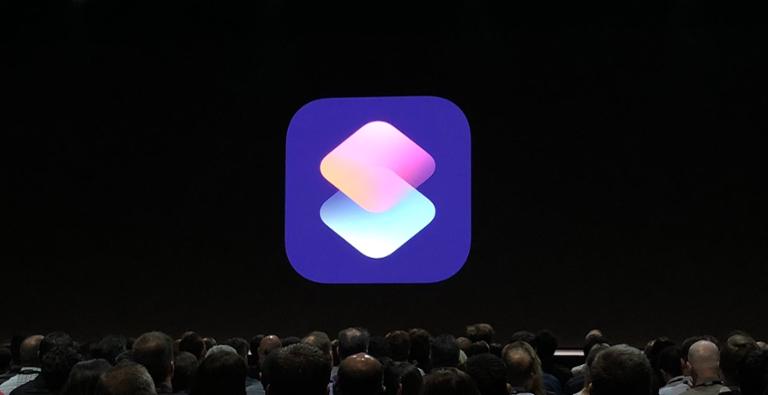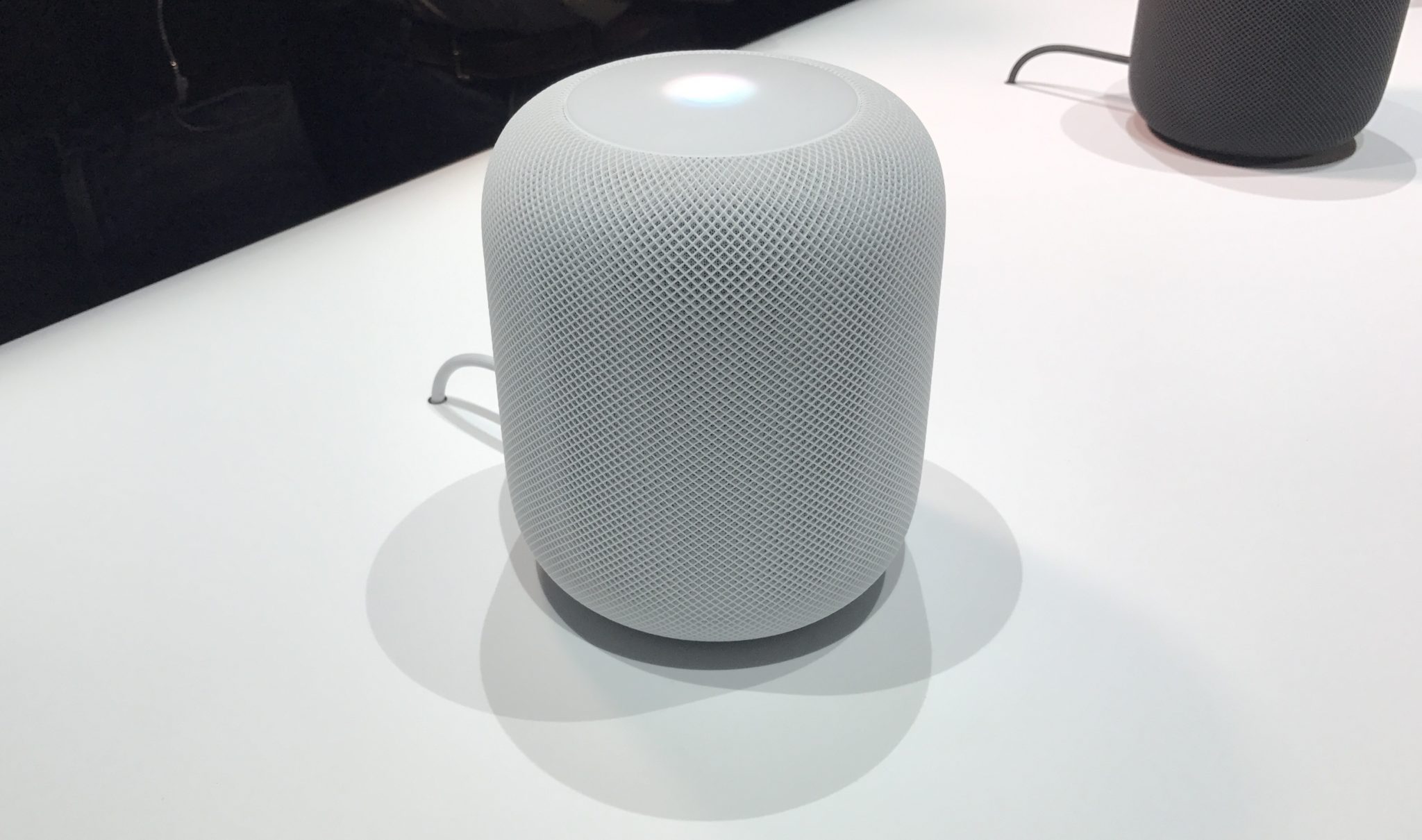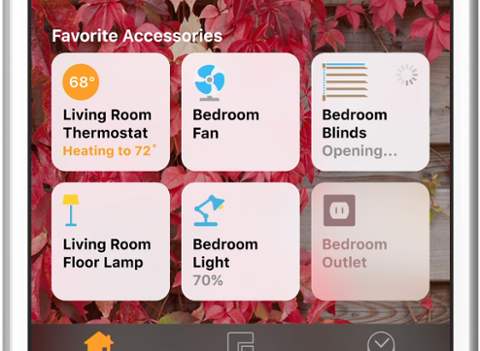
When Siri Shortcuts launched at WWDC 2018, it was immediately recognized as a huge leap forward for Siri, as well as useful for users. It also tackles one market Apple has yet to conquer: The low/no code platform. When SiriKit launched, it was limited to a few ‘domains’ and ‘intents.’ As we noted, this seriously hampered the HomePod experience; even though many actions were handed off to iPhone, you couldn’t ask Siri to do them via HomePod. Our most glaring example is Lyft. Ridesharing apps aren’t a SiriKit domain available to HomePod, so asking Siri to request a ride for you is a non-starter. It’s still not a domain for HomePod, but the onus is now on Lyft to support Siri Shortcuts rather than wait for Apple to green-light ridesharing apps for SiriKit that can be used broadly. And it’s here things diverge. You can use Siri on the phone to request a Lyft, but you must qualify your start and end points. With Siri Shortcuts, Lyft could add the ability for users to say, “Siri, get me a ride to work,” which would start at home and end at your office – every time. The road splits even more when we consider the Siri Shortcuts app. With it, users can create bespoke actions – almost like their own unique app-creation portal. It can be as simple as sending a message to a loved one and then silencing your phone whenever you're at the movies. In stringing actions together to create a more formidable shortcut, the bounds of Siri Shortcuts are deep and wide. With Siri Shortcuts, Apple has supported the citizen coder, and developers themselves may have renewed faith in Siri. As we’ve noted before, developers need only support a few APIs to weave Siri Shortcuts into their apps. For a service such as Lyft, Siri Shortcuts allows users to create their own unique phrases to accomplish a dedicated task – like getting to work from home. [caption id="attachment_142092" align="aligncenter" width="2048"]  Siri and HomePod at WWDC 2017[/caption] The goal of Siri Shortcuts is to make simpler actions (i.e., getting to work) easier. It can also make processes simpler; Apple allows up to 16 ‘types’ (actions) to be taken per Shortcut. It's at this intersection where the citizen coder thrives. Apple knows as much. Its subsidiary, FileMaker, is a platform dedicated to the citizen coder for enterprise purposes. It released survey findings that show 83 percent of respondents consider creating their own micro-apps helpful to their workflow, while 48 percent say it actually makes them happier at work. Perhaps coincidentally, Apple officially acquired the precursor to Siri Shortcuts, Workflow, two months after FileMaker released its survey. (Google rolled out its own lightweight coding environment, App Maker, in late 2016.) As we noted when we covered FileMaker’s study, allowing users to create their own solutions for unique problems can help clear the Jira queue, and leave developers to the larger tasks at hand. For iOS and macOS developers, augmented reality (ARKit) and machine learning (CoreML and CreateML) loom large. To be blunt, supporting Siri Shortcuts is far simpler than implementing a myriad of features at the behest of users while also trying to prepare for what’s next. Doubters should look at IFTTT, the web hook service for cloud-based services. It started small, much like Siri Shortcuts, but is now a robust service any web-based app can implement. Siri Shortcuts is similarly positioned, but offers more dedicated paths that appeal to developers and users alike. Developers can choose which in-app services should be triggered by Siri, and users can compile many of their own actions using the Siri Shortcuts app. As we continue to travel the long curve towards ambient computing and what may be a more unified app environment between iOS and macOS, Siri Shortcuts are a good glimpse at how citizen coding can make an impact on the app economy at large.
Siri and HomePod at WWDC 2017[/caption] The goal of Siri Shortcuts is to make simpler actions (i.e., getting to work) easier. It can also make processes simpler; Apple allows up to 16 ‘types’ (actions) to be taken per Shortcut. It's at this intersection where the citizen coder thrives. Apple knows as much. Its subsidiary, FileMaker, is a platform dedicated to the citizen coder for enterprise purposes. It released survey findings that show 83 percent of respondents consider creating their own micro-apps helpful to their workflow, while 48 percent say it actually makes them happier at work. Perhaps coincidentally, Apple officially acquired the precursor to Siri Shortcuts, Workflow, two months after FileMaker released its survey. (Google rolled out its own lightweight coding environment, App Maker, in late 2016.) As we noted when we covered FileMaker’s study, allowing users to create their own solutions for unique problems can help clear the Jira queue, and leave developers to the larger tasks at hand. For iOS and macOS developers, augmented reality (ARKit) and machine learning (CoreML and CreateML) loom large. To be blunt, supporting Siri Shortcuts is far simpler than implementing a myriad of features at the behest of users while also trying to prepare for what’s next. Doubters should look at IFTTT, the web hook service for cloud-based services. It started small, much like Siri Shortcuts, but is now a robust service any web-based app can implement. Siri Shortcuts is similarly positioned, but offers more dedicated paths that appeal to developers and users alike. Developers can choose which in-app services should be triggered by Siri, and users can compile many of their own actions using the Siri Shortcuts app. As we continue to travel the long curve towards ambient computing and what may be a more unified app environment between iOS and macOS, Siri Shortcuts are a good glimpse at how citizen coding can make an impact on the app economy at large.
 Siri and HomePod at WWDC 2017[/caption] The goal of Siri Shortcuts is to make simpler actions (i.e., getting to work) easier. It can also make processes simpler; Apple allows up to 16 ‘types’ (actions) to be taken per Shortcut. It's at this intersection where the citizen coder thrives. Apple knows as much. Its subsidiary, FileMaker, is a platform dedicated to the citizen coder for enterprise purposes. It released survey findings that show 83 percent of respondents consider creating their own micro-apps helpful to their workflow, while 48 percent say it actually makes them happier at work. Perhaps coincidentally, Apple officially acquired the precursor to Siri Shortcuts, Workflow, two months after FileMaker released its survey. (Google rolled out its own lightweight coding environment, App Maker, in late 2016.) As we noted when we covered FileMaker’s study, allowing users to create their own solutions for unique problems can help clear the Jira queue, and leave developers to the larger tasks at hand. For iOS and macOS developers, augmented reality (ARKit) and machine learning (CoreML and CreateML) loom large. To be blunt, supporting Siri Shortcuts is far simpler than implementing a myriad of features at the behest of users while also trying to prepare for what’s next. Doubters should look at IFTTT, the web hook service for cloud-based services. It started small, much like Siri Shortcuts, but is now a robust service any web-based app can implement. Siri Shortcuts is similarly positioned, but offers more dedicated paths that appeal to developers and users alike. Developers can choose which in-app services should be triggered by Siri, and users can compile many of their own actions using the Siri Shortcuts app. As we continue to travel the long curve towards ambient computing and what may be a more unified app environment between iOS and macOS, Siri Shortcuts are a good glimpse at how citizen coding can make an impact on the app economy at large.
Siri and HomePod at WWDC 2017[/caption] The goal of Siri Shortcuts is to make simpler actions (i.e., getting to work) easier. It can also make processes simpler; Apple allows up to 16 ‘types’ (actions) to be taken per Shortcut. It's at this intersection where the citizen coder thrives. Apple knows as much. Its subsidiary, FileMaker, is a platform dedicated to the citizen coder for enterprise purposes. It released survey findings that show 83 percent of respondents consider creating their own micro-apps helpful to their workflow, while 48 percent say it actually makes them happier at work. Perhaps coincidentally, Apple officially acquired the precursor to Siri Shortcuts, Workflow, two months after FileMaker released its survey. (Google rolled out its own lightweight coding environment, App Maker, in late 2016.) As we noted when we covered FileMaker’s study, allowing users to create their own solutions for unique problems can help clear the Jira queue, and leave developers to the larger tasks at hand. For iOS and macOS developers, augmented reality (ARKit) and machine learning (CoreML and CreateML) loom large. To be blunt, supporting Siri Shortcuts is far simpler than implementing a myriad of features at the behest of users while also trying to prepare for what’s next. Doubters should look at IFTTT, the web hook service for cloud-based services. It started small, much like Siri Shortcuts, but is now a robust service any web-based app can implement. Siri Shortcuts is similarly positioned, but offers more dedicated paths that appeal to developers and users alike. Developers can choose which in-app services should be triggered by Siri, and users can compile many of their own actions using the Siri Shortcuts app. As we continue to travel the long curve towards ambient computing and what may be a more unified app environment between iOS and macOS, Siri Shortcuts are a good glimpse at how citizen coding can make an impact on the app economy at large. 